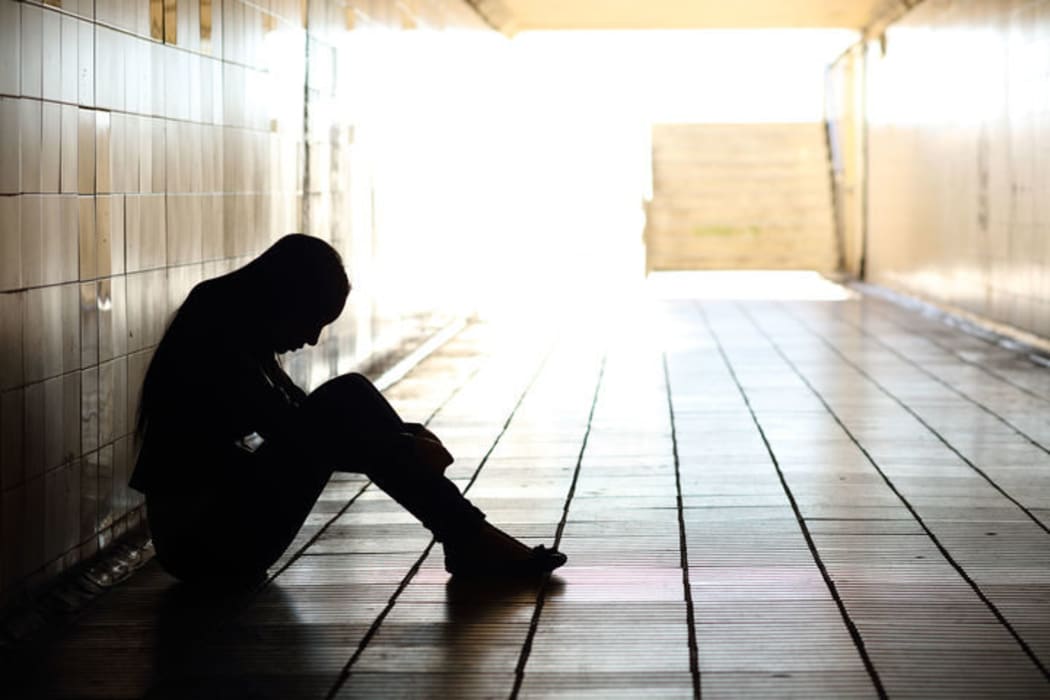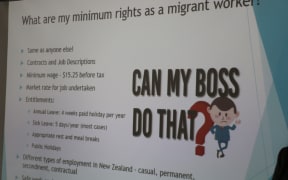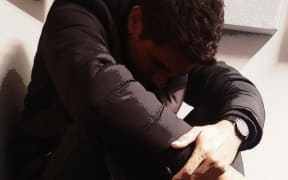Nearly a third of New Zealand secondary school students deliberately hurt themselves, research shows.

Photo: RNZ/Cole Eastham-Farrelly
Victoria University's Marc Wilson led the study and said self harm commonly involved cutting the skin or sticking sharp objects into the body.
Lucia Blas started cutting herself at just twelve years old. She said her self-harming then extended to hitting herself against furniture, biting, scratching and burning herself.
She said self-harming provided an escape from the problems she faced at school and home.
"I felt like I couldn't talk about it because every time I did it was minimised and dismissed, or it would just back fire and I would be treated like I was weak and worthless.
"I had no escape other than releasing my emotional pain in a physical way - sort of to distract myself."
Ms Blas said when she was growing up she realised she wasn't the only young person turning to self harm to deal with life's problems.
"It was something that I thought nobody else would ever do and I was very ashamed of it.
"It was only when I started therapy and recovery that I found out that it was way more common than I would have ever thought, and I wasn't alone."
Prof Wilson has spent the last five years talking to thousands of people aged 13 to 18 about non-suicidal self harm. He also interviewed families and had discussions with school councillors.
He said most young people in the study used self harm as a tool to distract themselves from difficult situations.
"If you find yourself in a place where, for example, you've had a fight with your girlfriend or boyfriend, you've lost your job, or you've got a bad assignment mark and you're feeling really stink about yourself and you go and hurt yourself, you are no longer thinking about that anymore - you're now dealing with the pain of a wound."
Although the study did not focus on suicide, just under one in five young people he surveyed met the criteria for suicidal concern.
School councillor Sarah Maindonald said parents needed to pay attention to signs that might indicate their child was self-harming.
"Children are very good at hiding self-harming - they'll often cut on their thighs or upper arms so it's not easily seen.
"But if parents are noticing that they're wearing clothing that's covering their body most of the time, they might want to be asking some questions."
Ms Maindonald said it was important parents create an environment with their child where talking about emotions was normal.
"The best thing is to keep good communication ... so that they are going to feel able to open up if they are feeling distressed. And not be afraid to ask those questions even if they give a grumpy response, at least they know you care about their emotional well-being."
The research team behind the Victoria University study was planning to carry out further research on the level to which self-harm predicts future suicidal thoughts and behaviour.
Where to get help:
Need to Talk? Free call or text 1737 any time to speak to a trained counsellor, for any reason.
Lifeline: 0800 543 354
Suicide Crisis Helpline: 0508 828 865 / 0508 TAUTOKO (24/7). This is a service for people who may be thinking about suicide, or those who are concerned about family or friends.
Depression Helpline: 0800 111 757 (24/7)
Samaritans: 0800 726 666 (24/7)
Youthline: 0800 376 633 (24/7) or free text 234 (8am-12am), or email talk@youthline.co.nz
What's Up: online chat (7pm-10pm) or 0800 WHATSUP / 0800 9428 787 children's helpline (1pm-10pm weekdays, 3pm-10pm weekends)
Kidsline (ages 5-18): 0800 543 754 (24/7)
Rural Support Trust Helpline: 0800 787 254
Healthline: 0800 611 116
Rainbow Youth: (09) 376 4155
If it is an emergency and you feel like you or someone else is at risk, call 111.






